As sure as the seasons change, when September comes, so do Apple’s new product releases. With the new iPhone 6s Plus officially going public on September 25th, the world’s attention was once again focused on Apple. But aside from the splendid appearance of the 6s Plus, what new technologies will impact the upstream and downstream aspects of the mobile phone industry?
Here’s a first-hand analysis from SITRI’s team of experts.
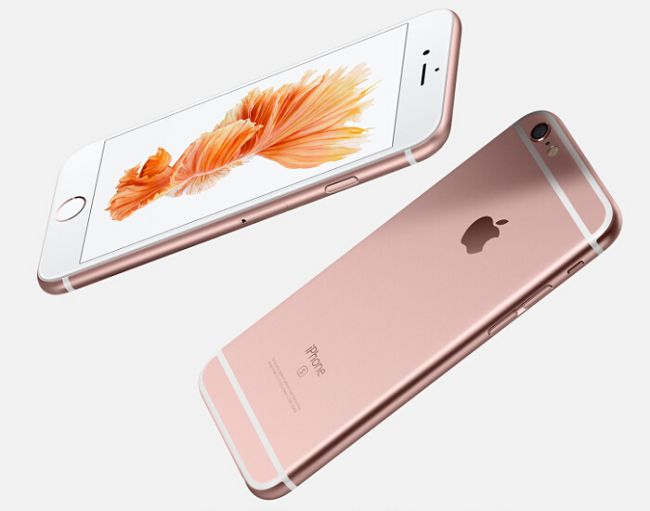
As an updated version of iPhone 6 Plus, iPhone 6s Plus shows no marked change in outward appearance. However, on the inside, the new release features substantial improvements in hardware performance in three main areas: 1) The addition 3D Touch technology; 2) The use of a 64-bit A9 processor and; 3) an updated sensor.
Arrangement of iPhone 6s Plus Components:
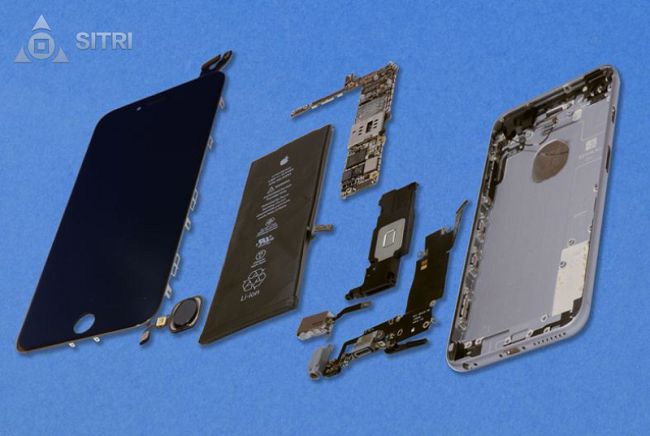
Major Components of the iPhone 6s Plus:
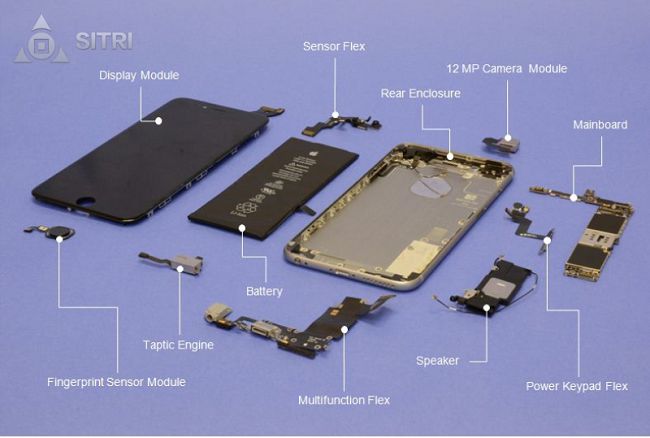
3D Touch Technology
The 3D Touch feature is centralized in the Retina HD display screen, with pressure sensing functions added to the 2D Multi-Touch. Pressure sensing refers to the technology that responds to and gives feedback to the intensity pressure a user exerts on the screen. Compared to the Force Touch first used in the MacBook and Apple Watch, 3D Touch features higher pressure sensitivity and shorter sensing time, while the Taptic Engine emits a slight vibration to sense the intensity of screen pressure, working with 3D Touch to complete the pressure touch feedback.
Capacitive force touch sensor cells:
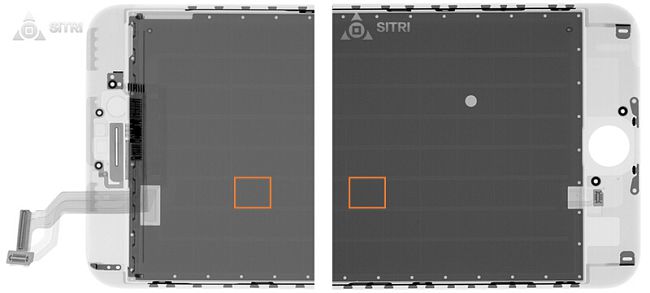
3D Touch drive chip (specification 343S00014):
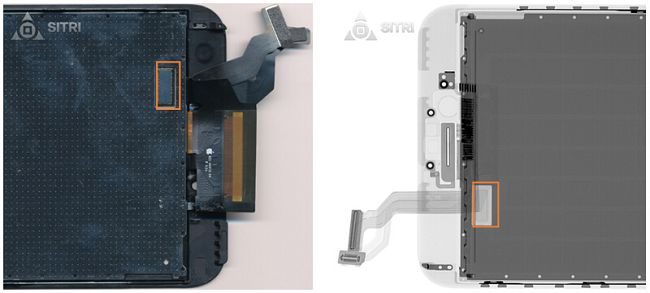
Taptic engine:
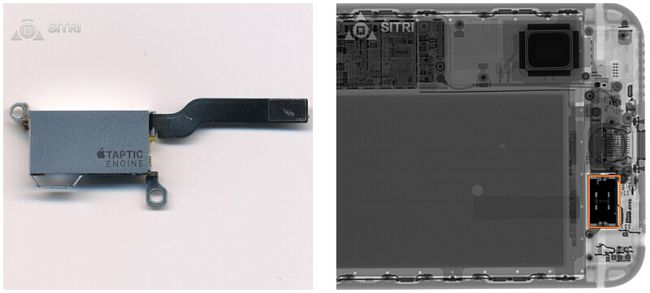
It is also worth mentioning that the Taptic Engine of the iPhone 6s Plus is much smaller than that of the iPhone 6s.
64-bit A 9 processor
The newest generation of A9 processor allows the iPhone 6s Plus to function faster in scrolling web pages, opening applications, etc., than the iPhone 6 Plus. The A9 processor works with an M9 co-processor to enable the iPhone 6s Plus to record more data movement without consuming more power.
Comparison of A9 and A8 processors in appearance:
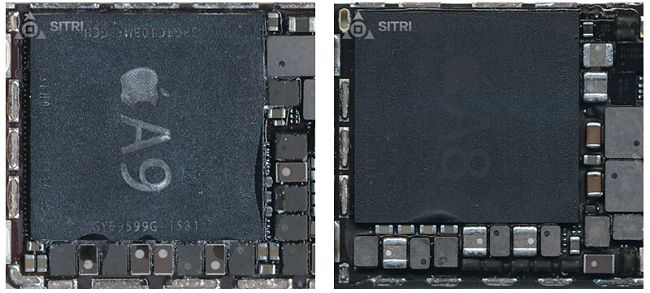
Die photo:
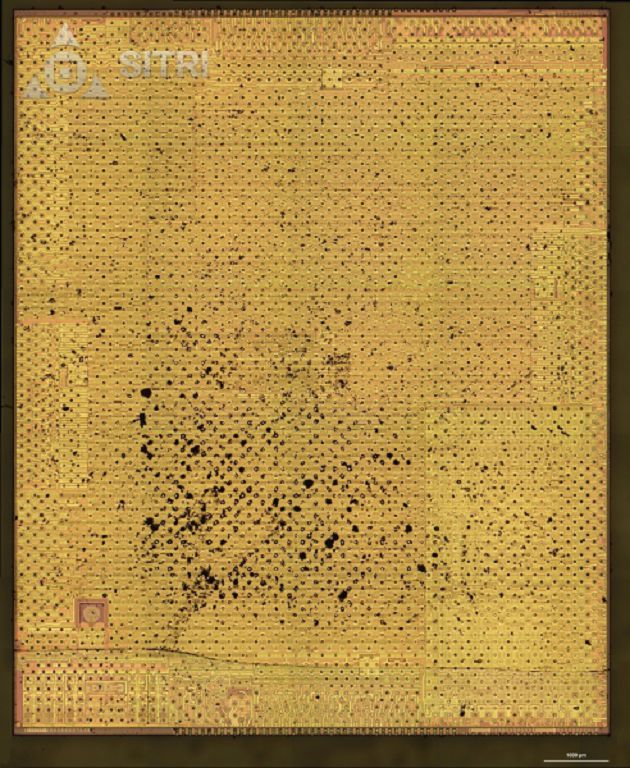
Die mark:
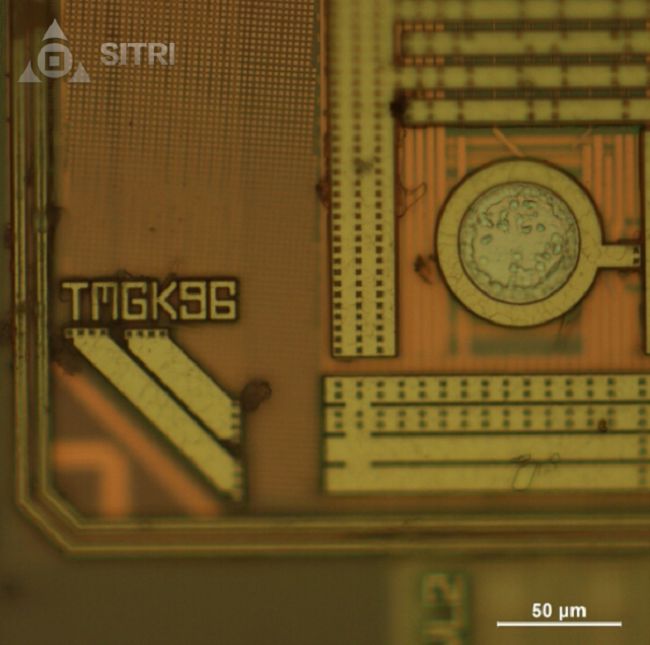
Cross section image:
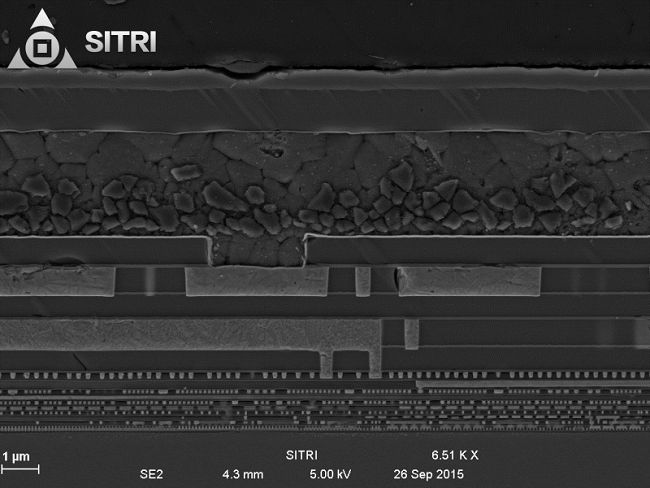
The cross section image above shows that the A9 processor consists of 12 layers of metal. A more detailed technology analysis of the A9 processor will be available from SITRI at a later date.
The sensor is an indispensable part of any smart phone, and Apple is an industry leader in phone sensor applications. Compared to the iPhone 6 Plus, the iPhone 6s Plus is equipped with the traditional 9 sensor types: accelerometers, gyroscope, electronic compass, barometer, fingerprint sensor, proximity and ambient light sensors, MEMS microphone and image sensor. However, Apple has made some adjustments to its selection of sensor suppliers. The following is detailed comparison in sensors:
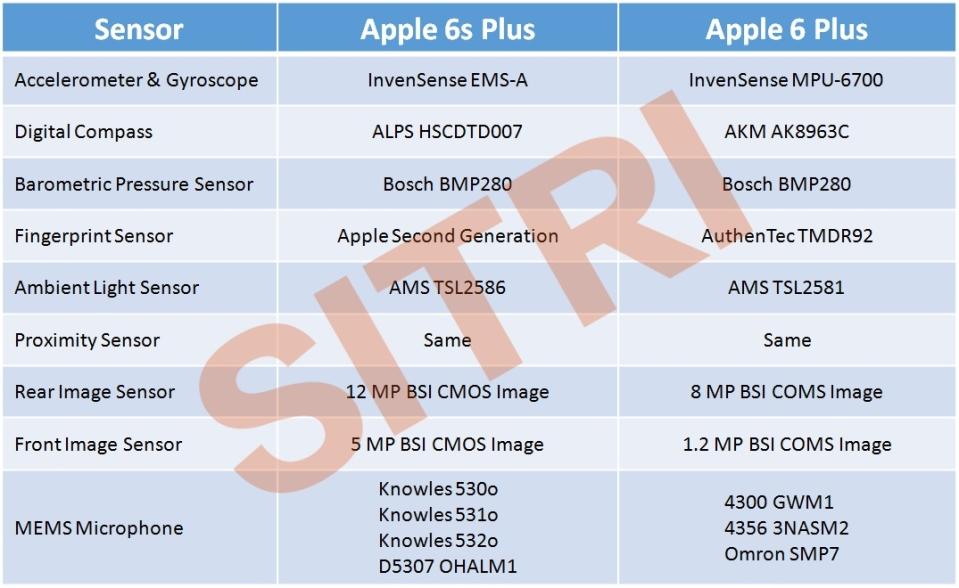
Inertial sensors (6-Axis)
As they did with the previous generation of iPhone 6 Plus, Apple chose InvenSense as the supplier of inertial sensors. But the package size is distinctively different from the previous generation. The iPhone 6s Plus uses only one inertial sensor (6-Axis accelerometer and gyroscope). The 6-Axis inertial sensor package size is 4.00 mm x 4.00 mm x 0.76 mm.
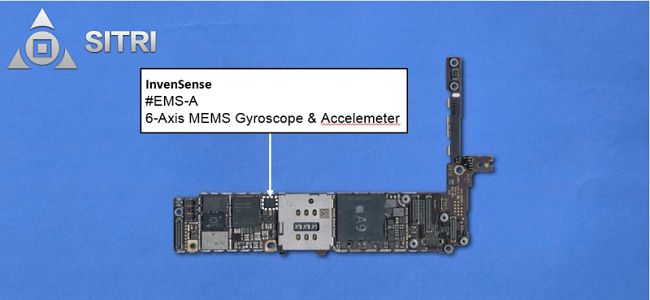
Package photos:
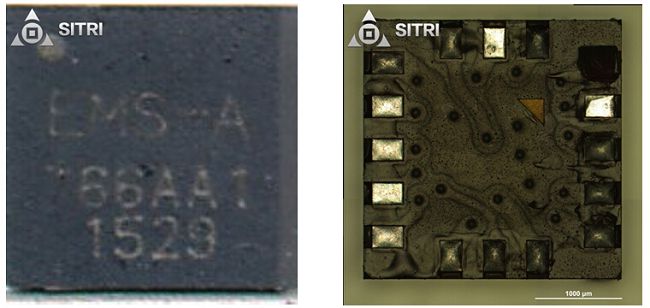
X-Ray photos:
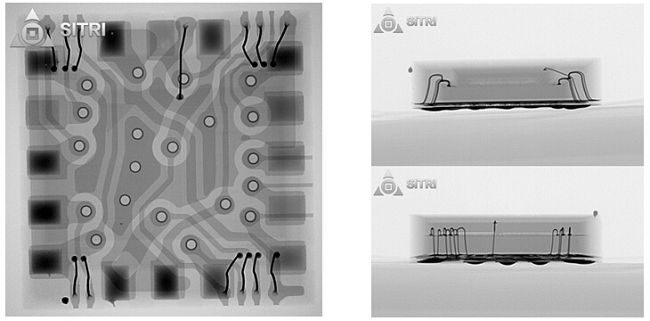
Die photo:
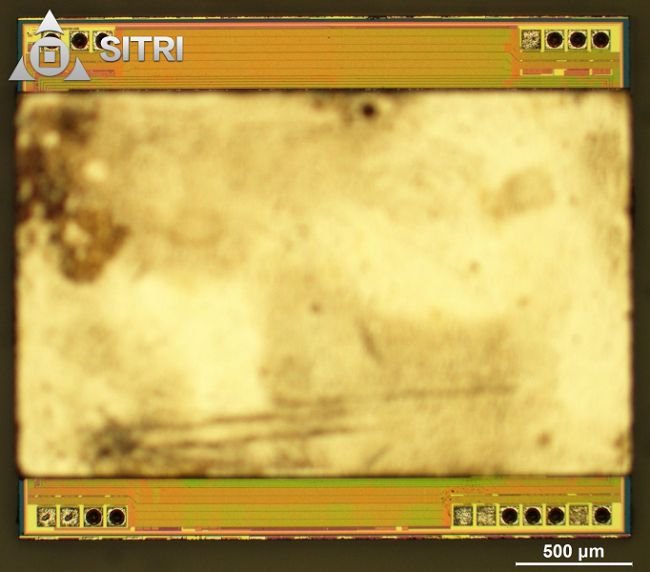
ASIC die photo:
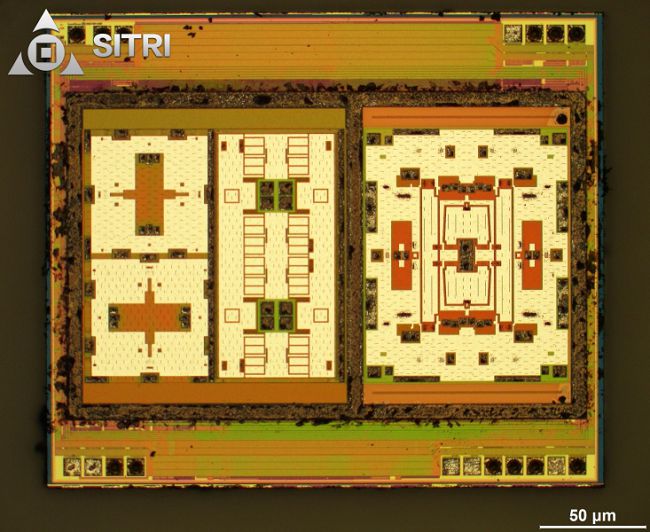
ASIC die mark:
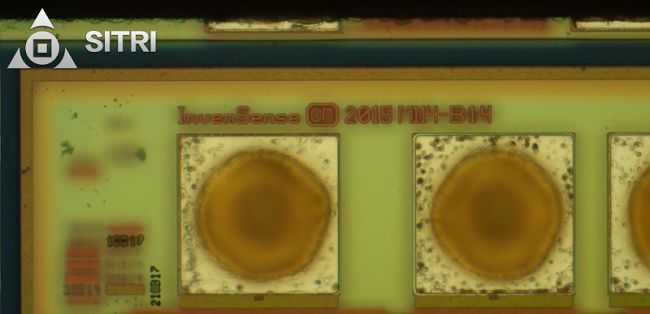
MEMS die photo:
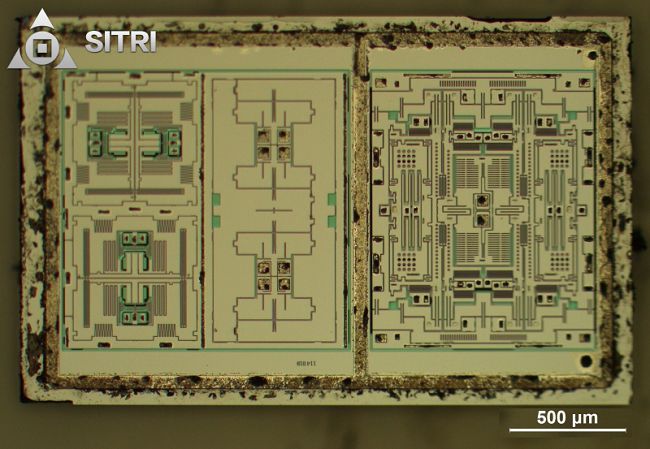
MEMS die mark:
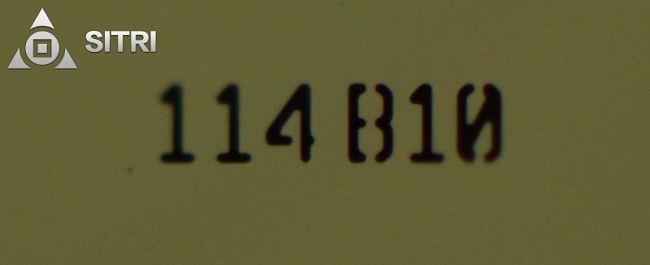
Air pressure sensor
Apple continues to use the same Bosch BMP 280 air pressure sensor as in the iPhone 6 Plus. The package size is 2.50 mm x 2.00 mm x 0.95 mm.

Package photos:
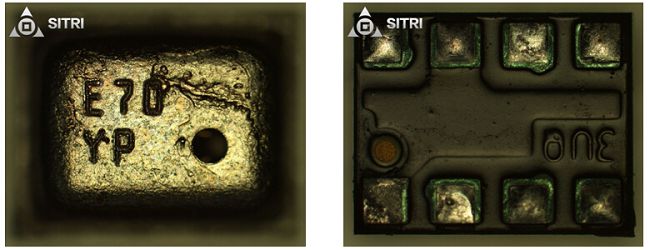
X-Ray photos:
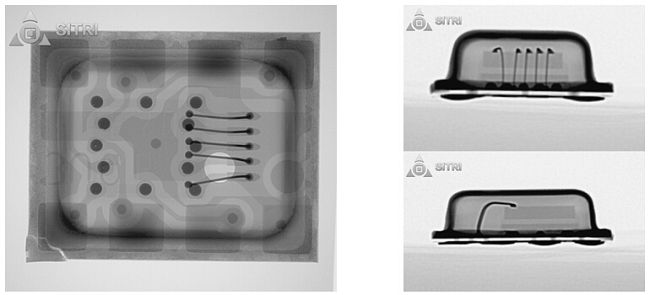
ASIC die photo:
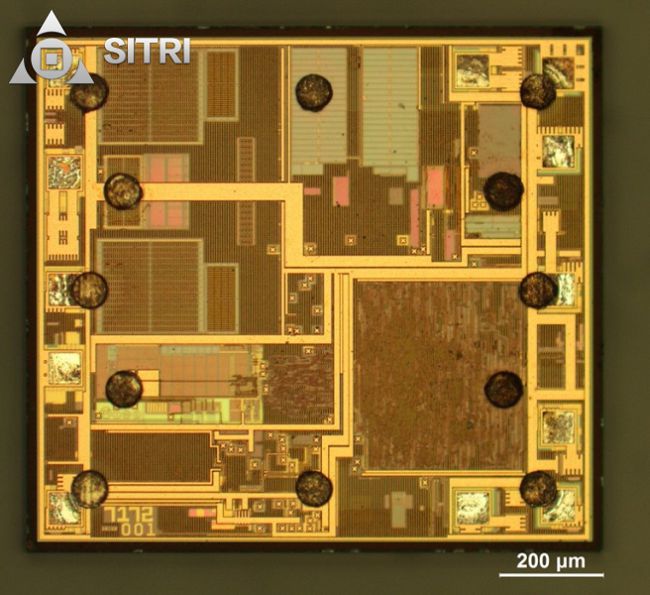
ASIC die mark:
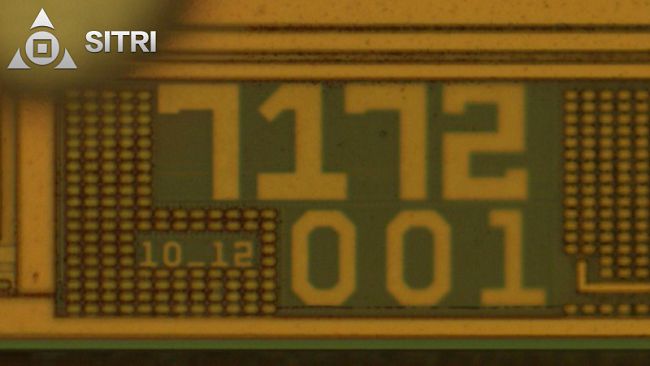
ASIC vertical cross section image:
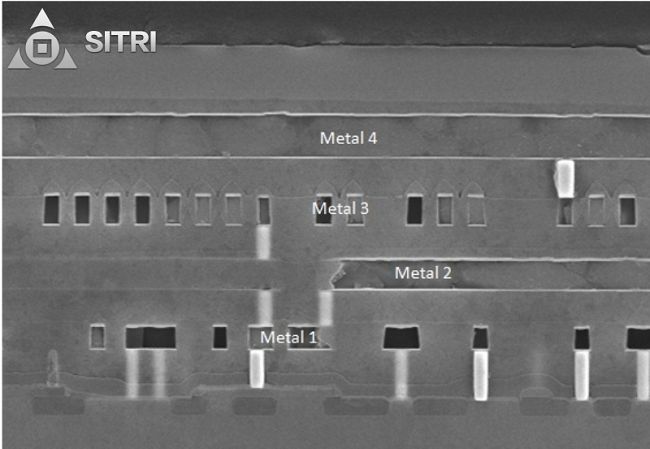
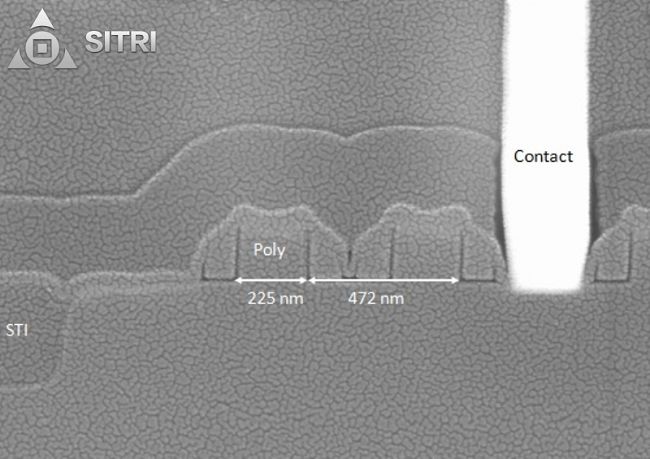
MEMS die photo:
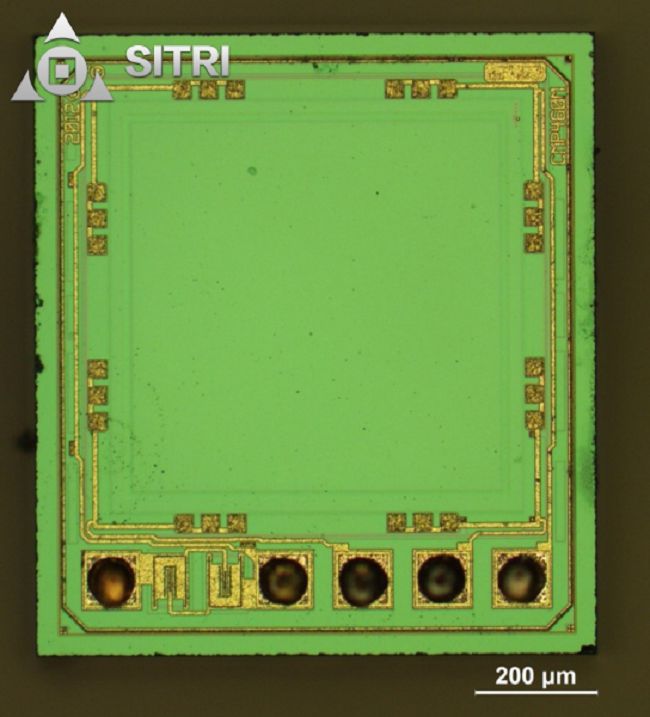
MEMS die marks:

MEMS cross section image:
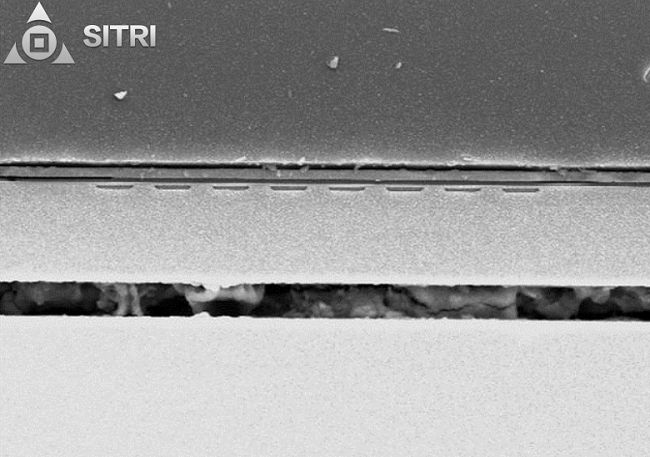
Electronic compass
The iPhone 6s Plus marks ALPS magnetic products’ first appearance in Apple iPhone products. The ALPS HSCDTD 007 is a strong competitor of the widely applied AKM AK 8963, and it is famous for low power consumption. Since the iPhone 6s Plus has reduced its battery capacity, it makes sense for Apple to use the HSCDTD007. The package size is 1.60 mm x 1.60 mm x 0.70mm.
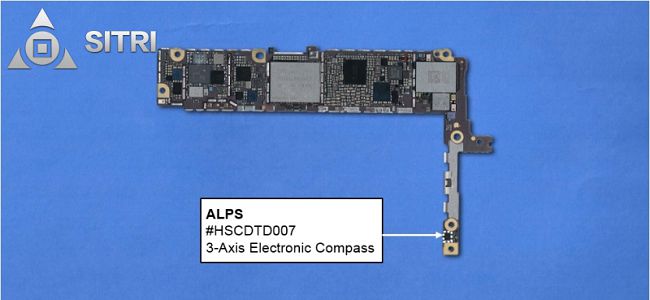
Electronic compass package photos:
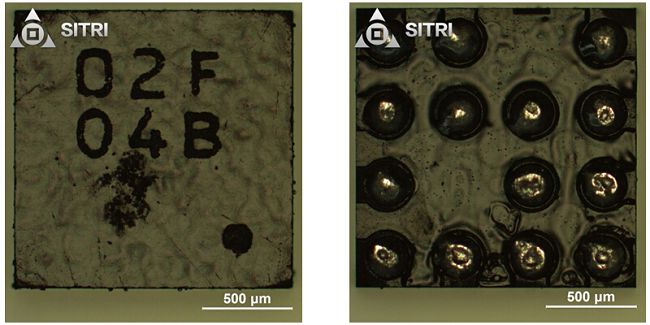
Electronic compass ASIC die photo:
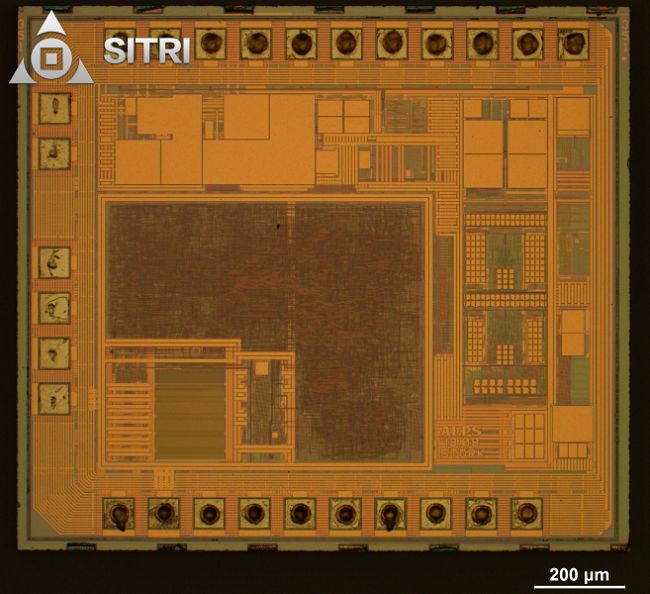
Electronic compass ASIC die mark:
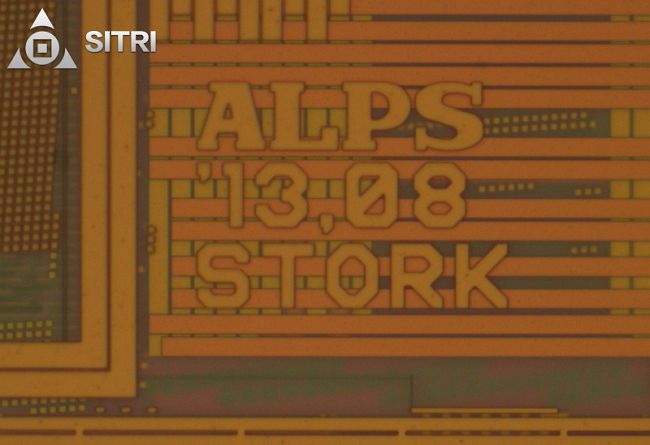
Electronic compass sensor die photos: (X-Axis, Y-Axis, Z-Axis)
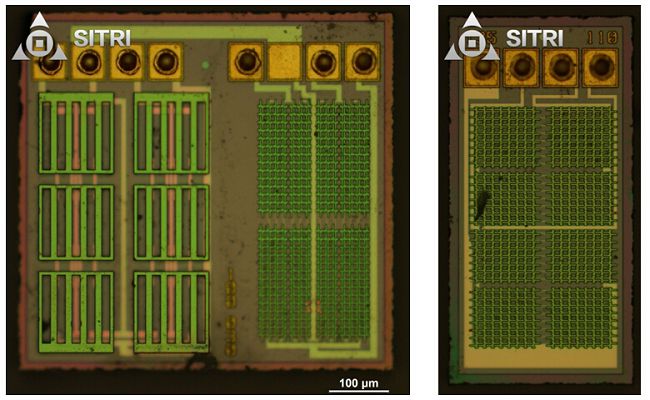
Electronic compass sensor die marks: (X-Axis, Y-Axis, Z-Axis)

Light sensor
The iPhone 6s Plus follows the previous design in the selection of its light sensor, choosing an independent proximity sensor and ambient light sensor. The ambient light sensor is an AMS TSL2586.
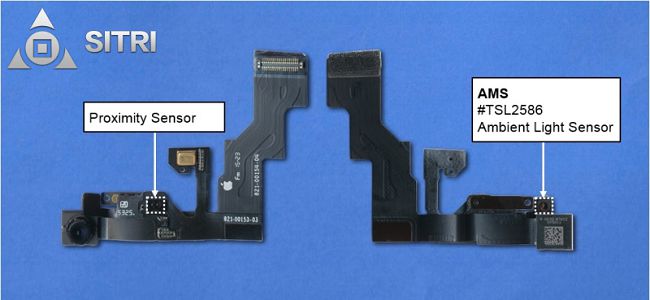
Proximity sensor package photos:
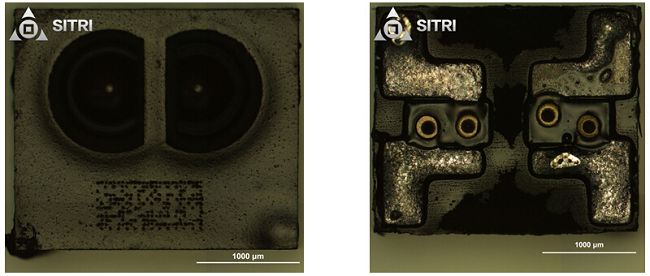
Proximity sensor package X-Ray photos:
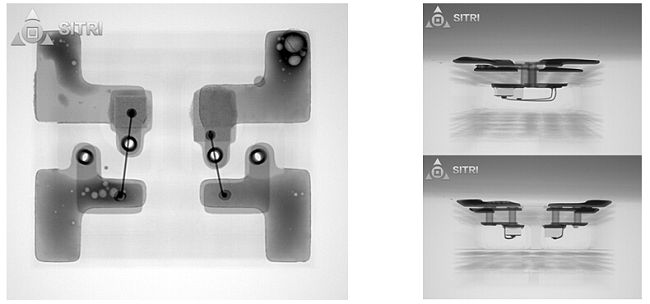
Proximity die photo:
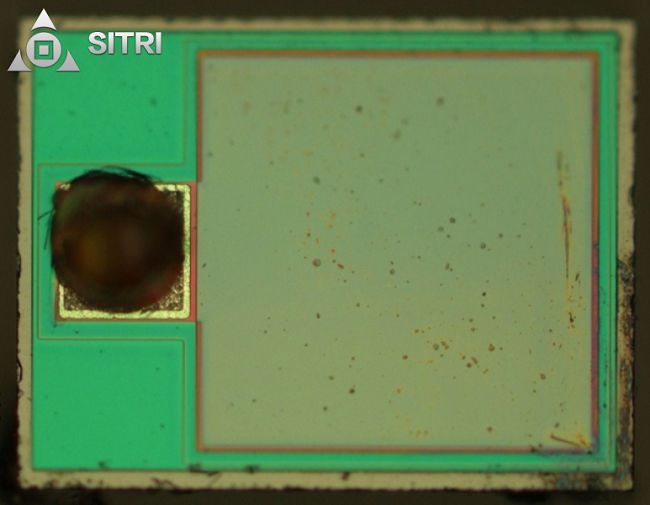
TSL2586 ambient light sensor package photos:
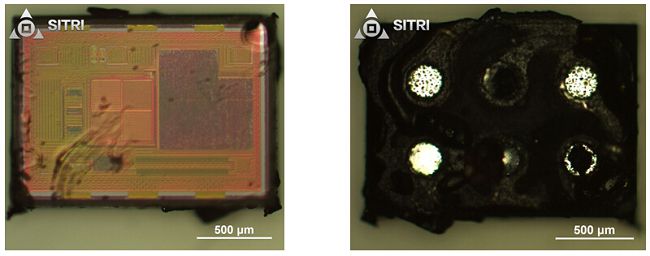
TSL2586 ambient light sensor die photo:
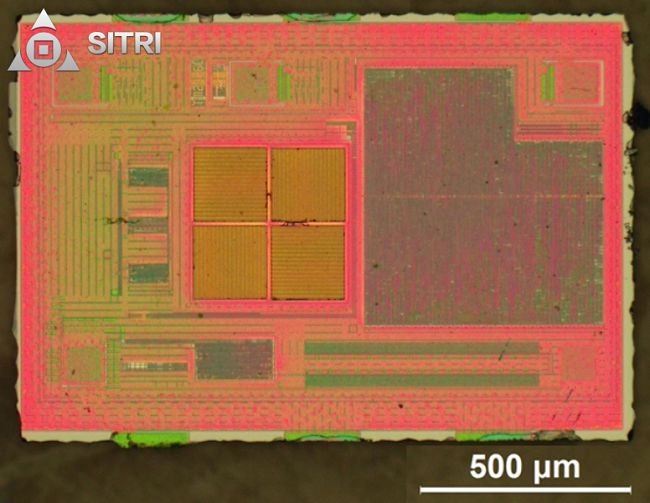
TSL2586 ambient light sensor die mark:
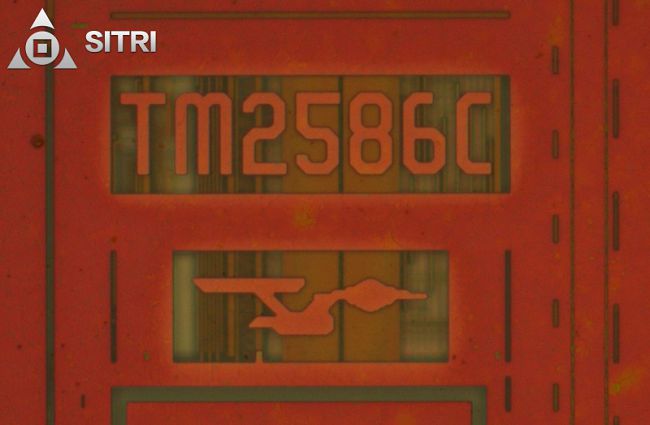
Fingerprint Sensor
The iPhone 6s Plus fingerprint sensor uses the same capacitive touch technology to acquire the skin fingerprint image. The package size is 12.05 mm X 10.43 mm X 1.06 mm.
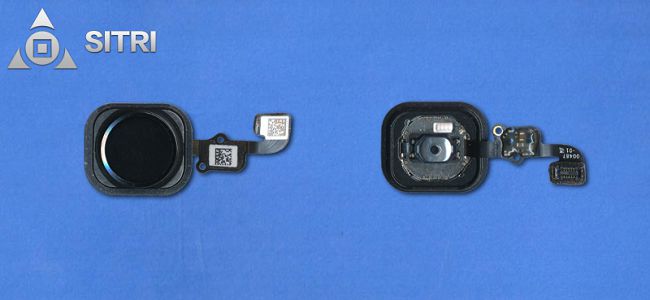
Package photos:
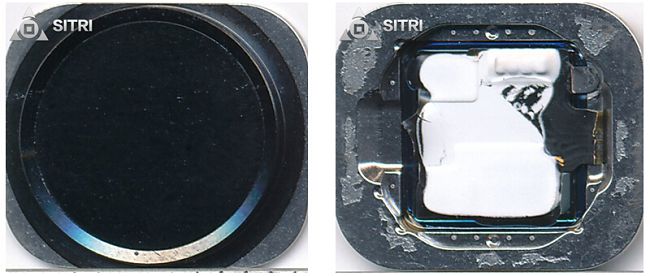
Fingerprint sensor die photo:
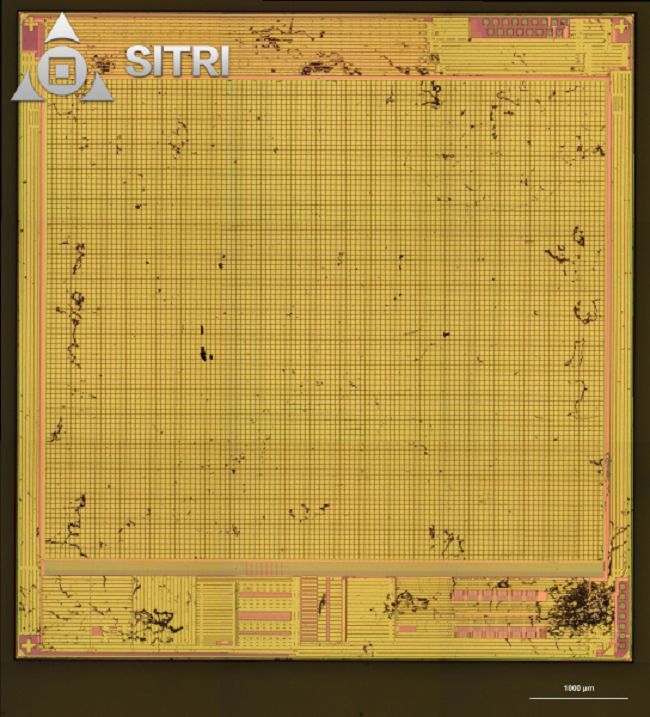
Fingerprint sensor ASIC die photo:
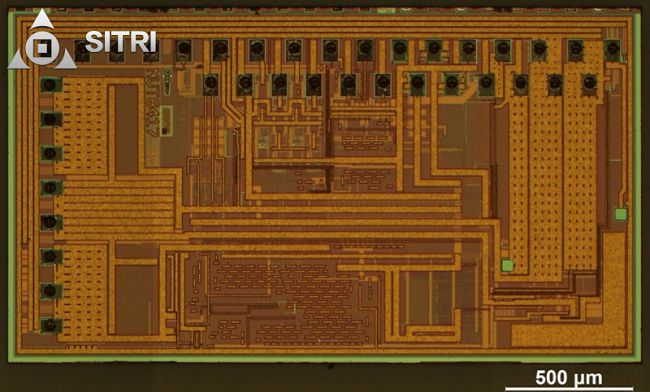
Fingerprint sensor ASIC die mark:

MEMS microphone
Of the 4 microphones in the iPhone 6s Plus, 3 of them come from Knowles (microphone 1 to microphone 3) and apart from a slight difference in the package surface mark, they have the same MEMS die inside.

Microphone 1
Package photos:
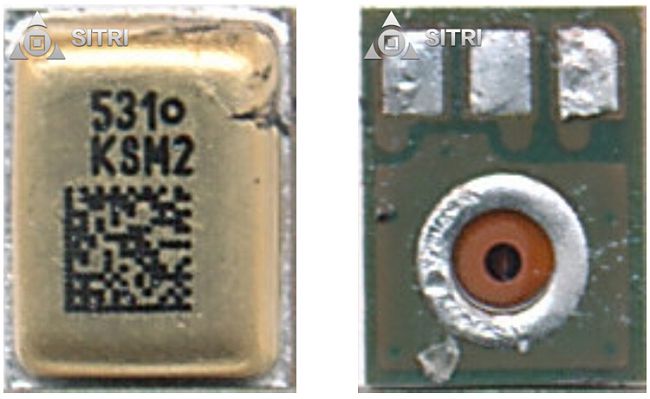
X-Ray photos:

MEMS die photo:
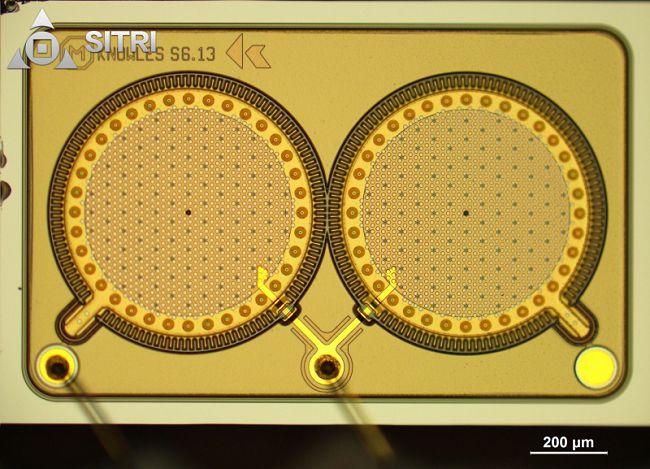
MEMS die mark:
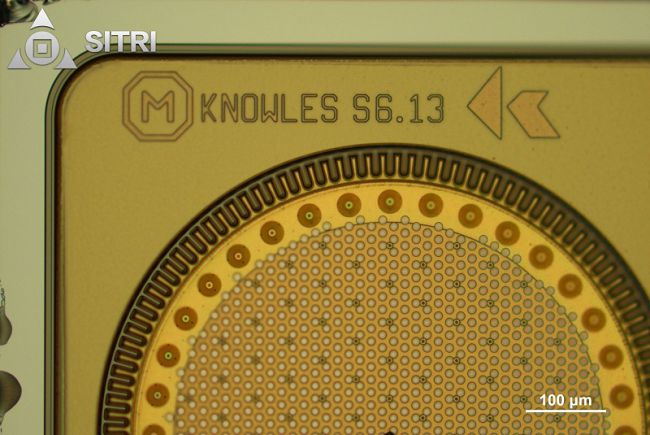
MEMS die SEM sample:
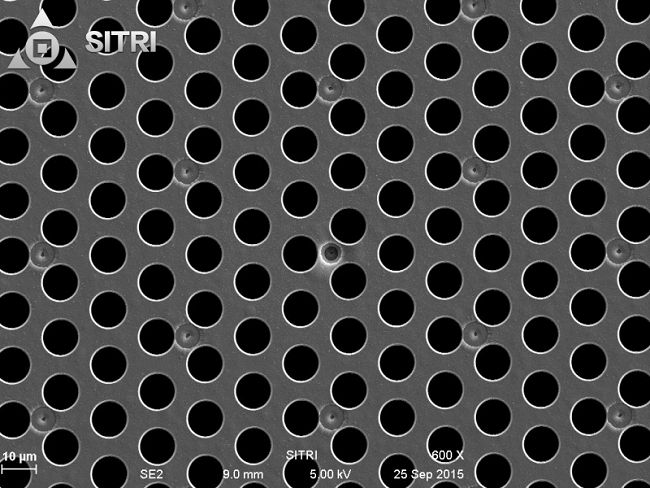
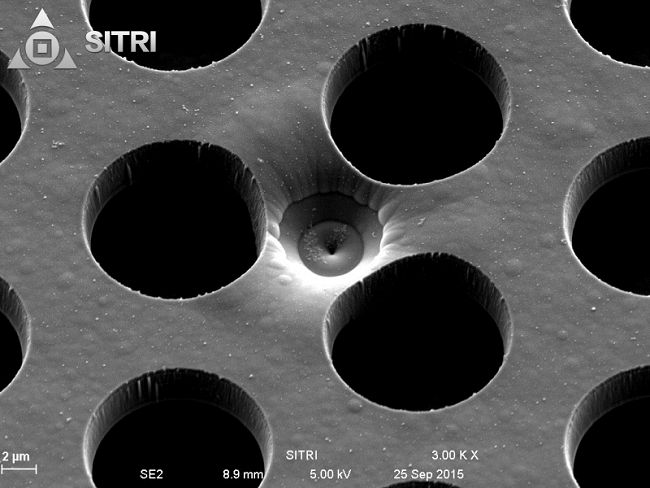
Microphone 2
Package photos:
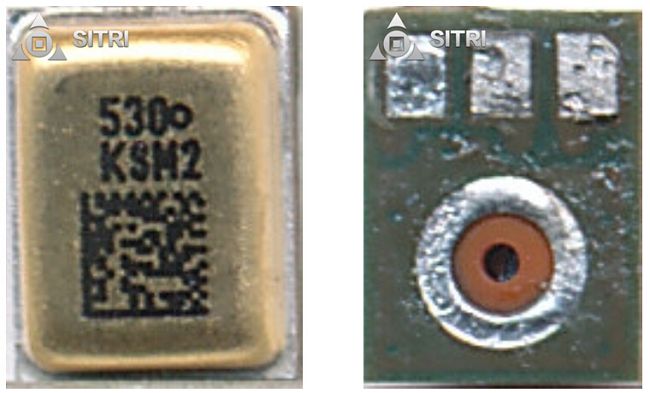
Microphone 3

Package photos:
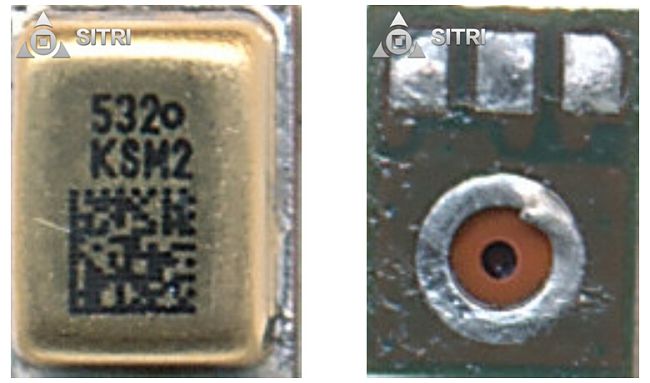
Microphone 4
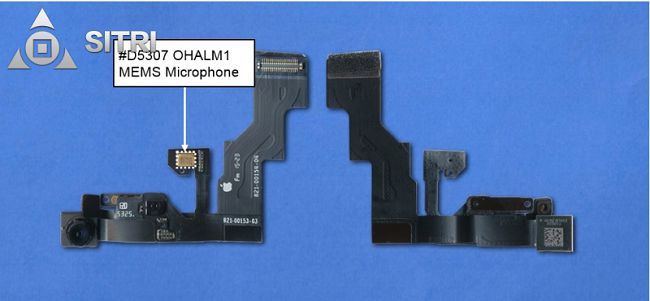
Package photos:

X-Ray photos:
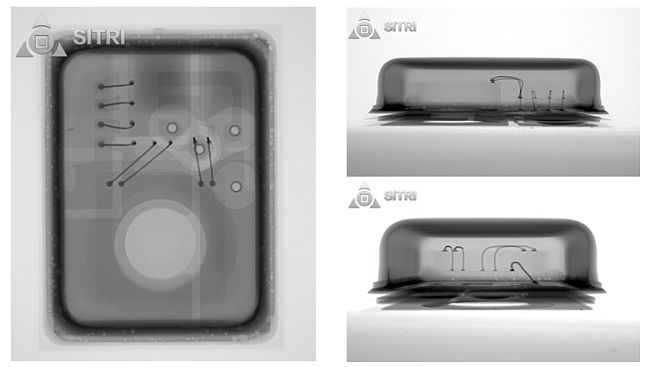
MEMS die photo:
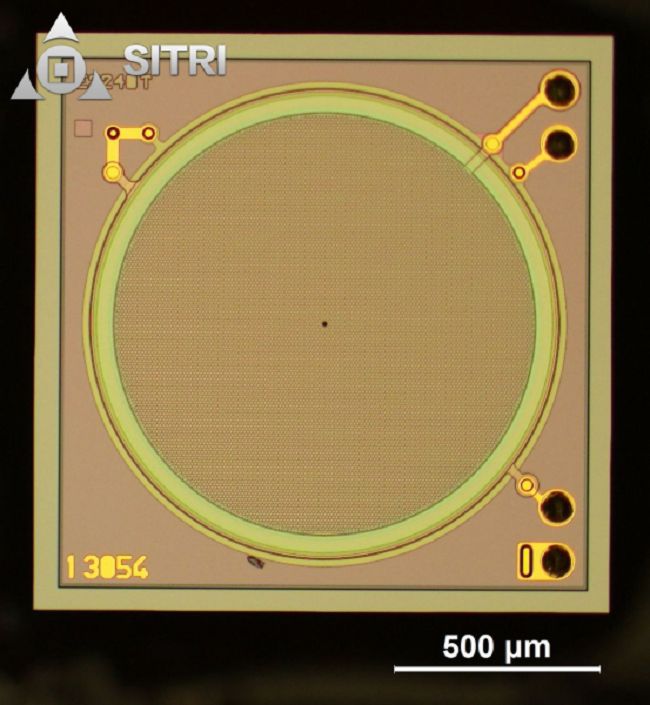
MEMS die marks:

MEMS die SEM sample:
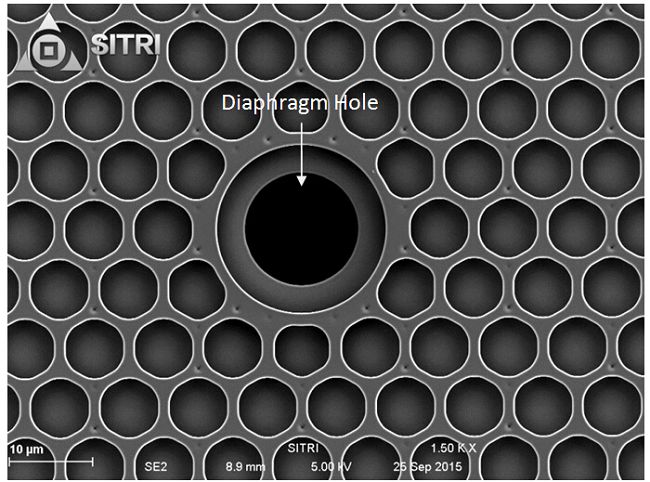
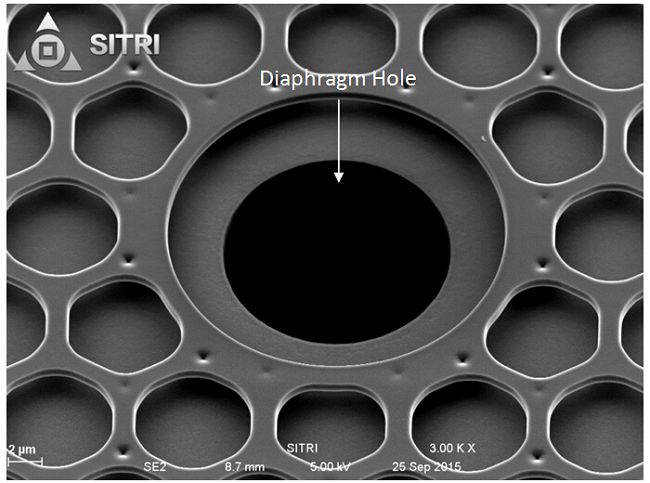
Image Sensor
iPhone 6s Plus has made considerable improvement in camera, with the built-in back camera using brand new 12 MP iSight camera modules whose 1.22 micron single pixel area smaller than the 1.55 micron single pixel area in iPhone 6 plus. The camera modules retain the back bulge style in iPhone 6 plus and the same sapphire crystal lens surface to protect the lens.
12 MP image sensor package photos:
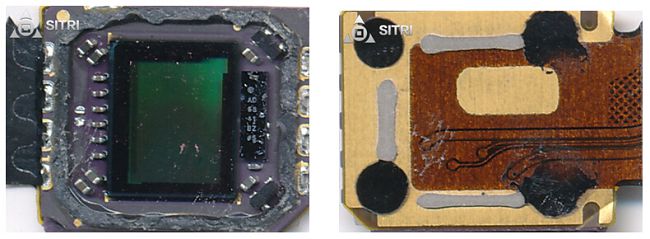
12 MP image sensor die photo with glass cover:
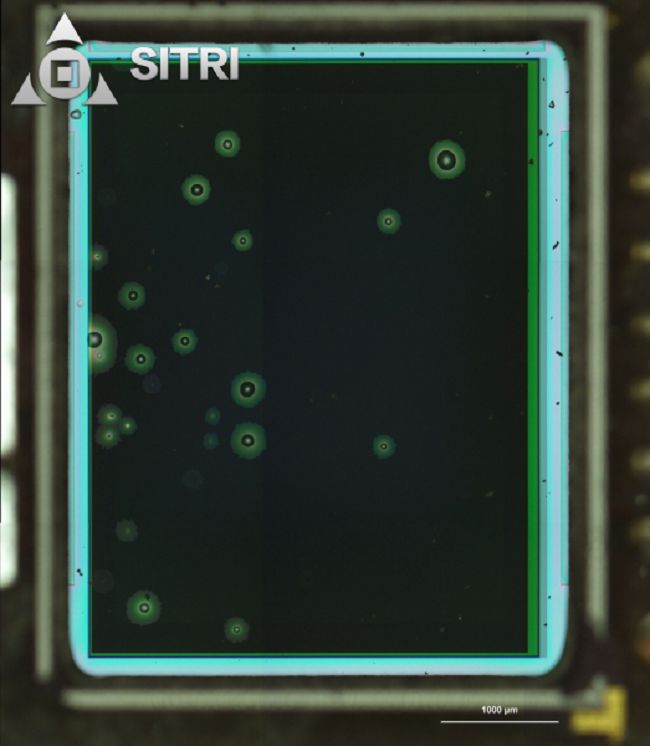
12 MP image sensor OM photo sample:

12 MP image sensor vertical image:
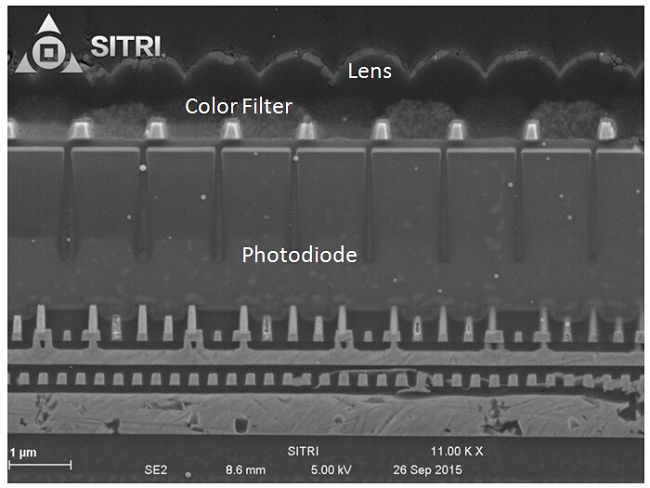
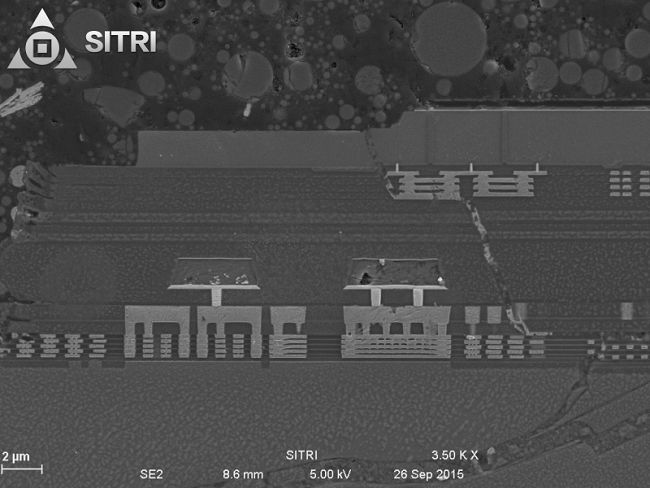
The image sensor in the front FaceTime camera in the iPhone 6s Plus has also been updated from the original 1.2 MP pixel to 5 MP pixel and features Retina Flash, automatic HDR photos and video, exposure control, facial recognition, and other features.
5 MP image sensor package photos:

5 MP image sensor die photo with glass cover:
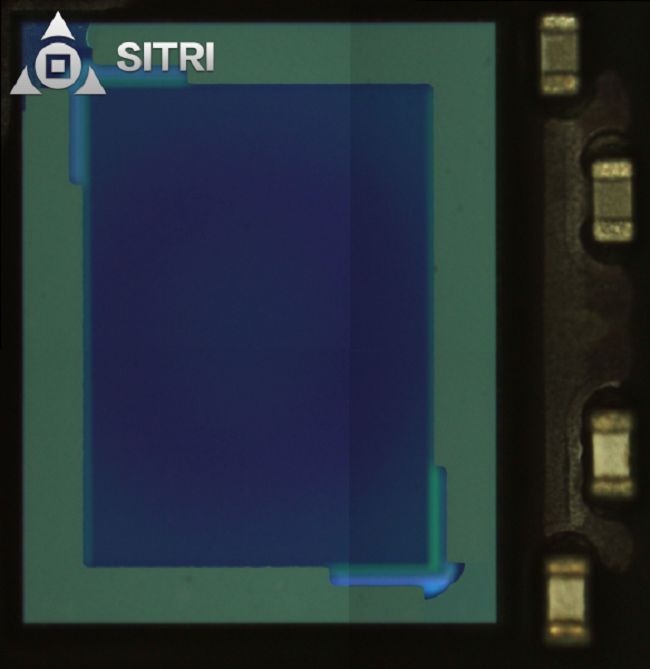
3D Touch technology, an A9 processor, and the updated camera and fingerprint sensors will undoubtedly become the highlights of this release of the iPhone 6s Plus. We will provide a more detailed analysis of the above components later. So please check back often.
If you are interested in analyses of other modules and other terminal products, please contact: sales@sitrigroup.com